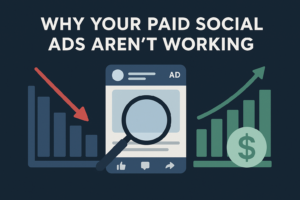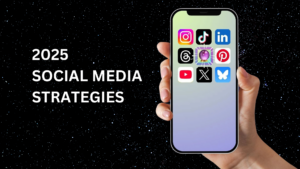
Paid Social Media ROAS
Why Your Paid Social Media Ads Aren’t Delivering ROAS—And How to Fix It You’ve invested in paid social media advertising. You’ve committed budget, time, and
AI DIGITAL MARKETING AGENCY
One of the challenges that a lot of companies struggle with is that they know that to be successful, you need to be visible on social media. But how many social media platforms is the right number for you?

Threads: Launched by Meta, Threads reached 300 million monthly users by December 2024, surpassing Bluesky’s user base.
Bluesky: As of December 2024, Bluesky has approximately 25 million users, experiencing rapid growth from 13 million just two months prior.
TikTok: Gender breakdown varies depending on source, but leans towards females.
Bluesky: Specific gender demographics are not widely reported as of now.
Threads: Detailed gender demographic data is currently limited.
Once you know who your audience is and what social media channels they use, it’s time to make the decision about which platforms to focus on. By focusing on one or two platforms instead of trying to be everywhere at once, you are able to create better relationships with customers and build trust with them over time. Through effective engagement strategies such as responding quickly to comments and messages, answering questions people have about your product or service, or providing helpful advice related to your industry, you can deepen these relationships even further. And this leads directly back to increased sales for your business!

Why Your Paid Social Media Ads Aren’t Delivering ROAS—And How to Fix It You’ve invested in paid social media advertising. You’ve committed budget, time, and

How to Improve Search Visibility and Drive More Organic Traffic For many businesses, low search visibility is a persistent challenge that directly impacts their ability

Generative Engine Optimization (GEO): The Future of Search and How It Differs from SEO As digital marketing continues to evolve, search is undergoing a radical

Updated Best Practices for Building a Brand Presence on YouTube (2025) YouTube continues to be a dominant platform for video content, offering businesses unparalleled opportunities

Best Practices for Building a Brand Presence on Instagram (2025) Instagram continues to dominate as a platform for visual storytelling, brand development, and audience engagement.

10 Proven Social Media Strategies to Dominate in 2025 In the dynamic landscape of 2025, mastering social media requires a strategic approach tailored to evolving